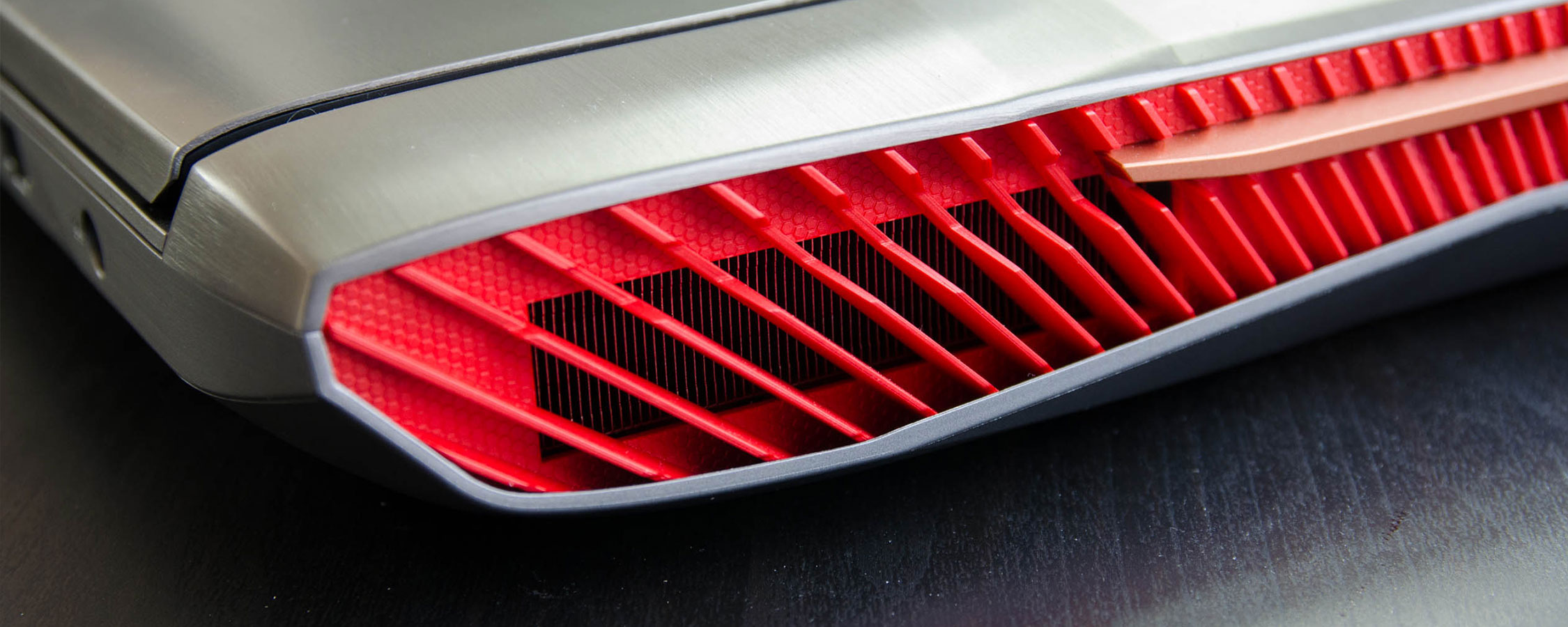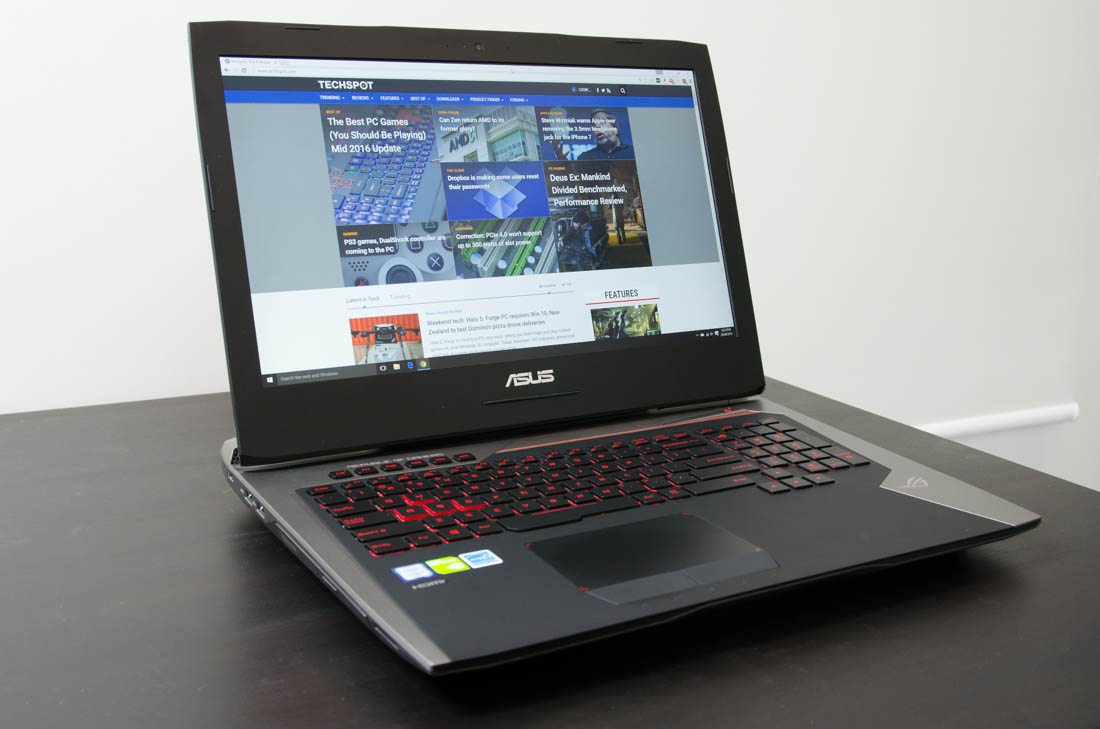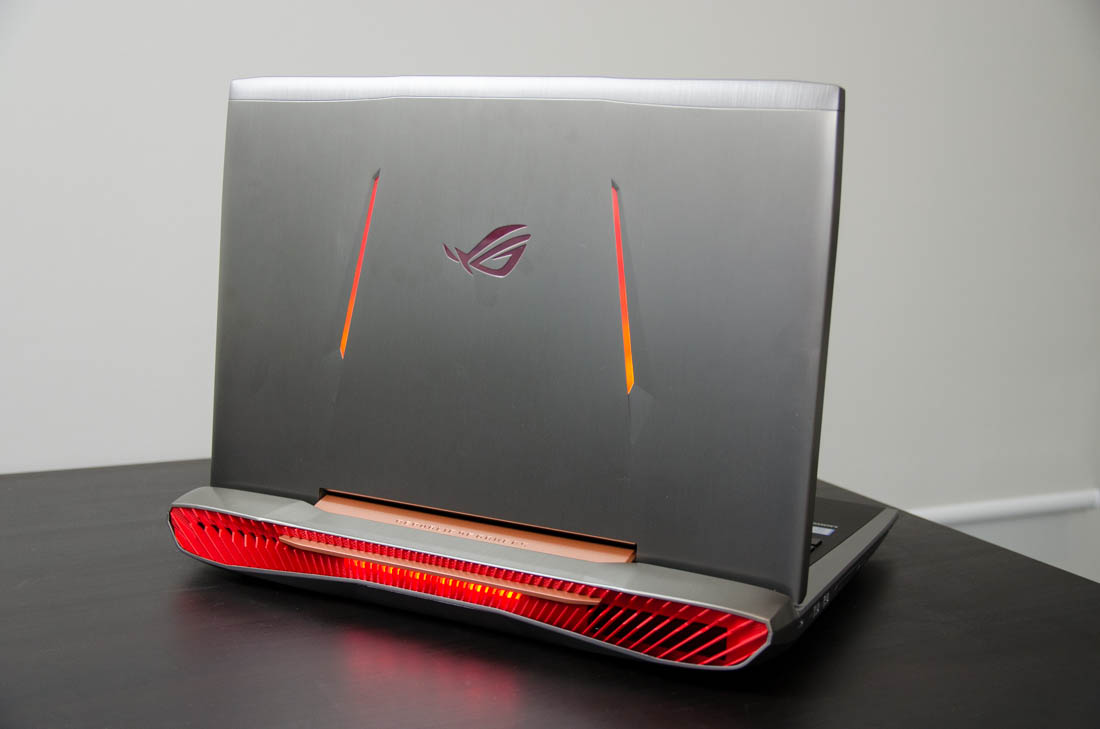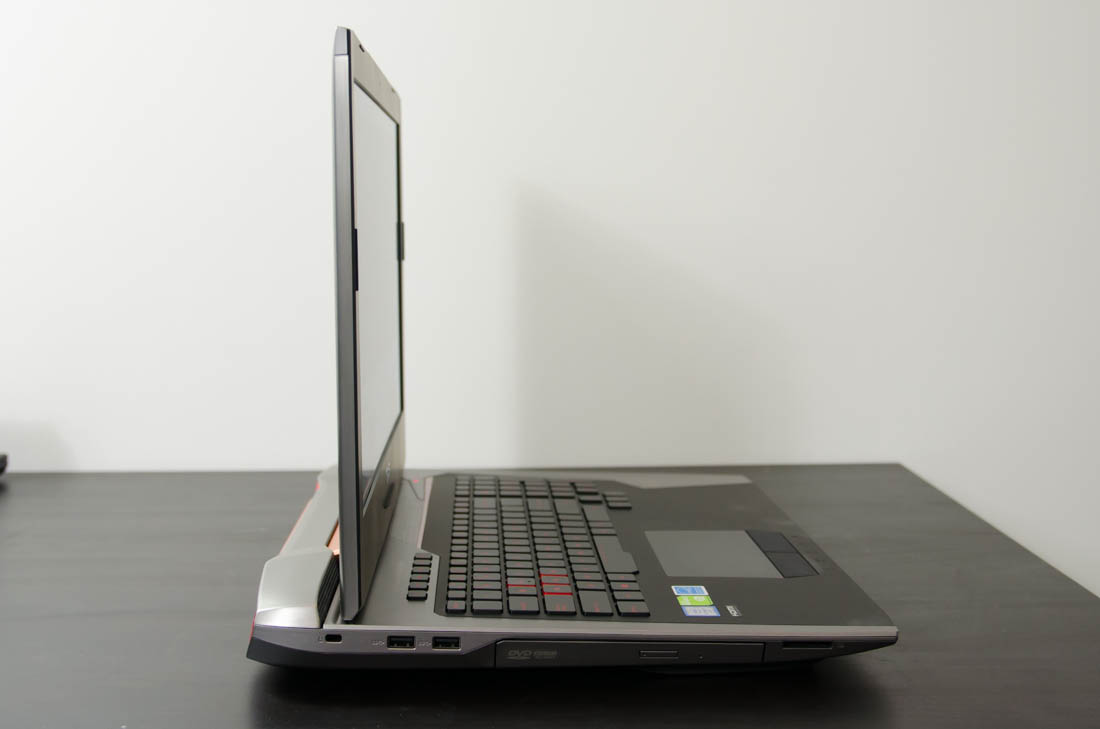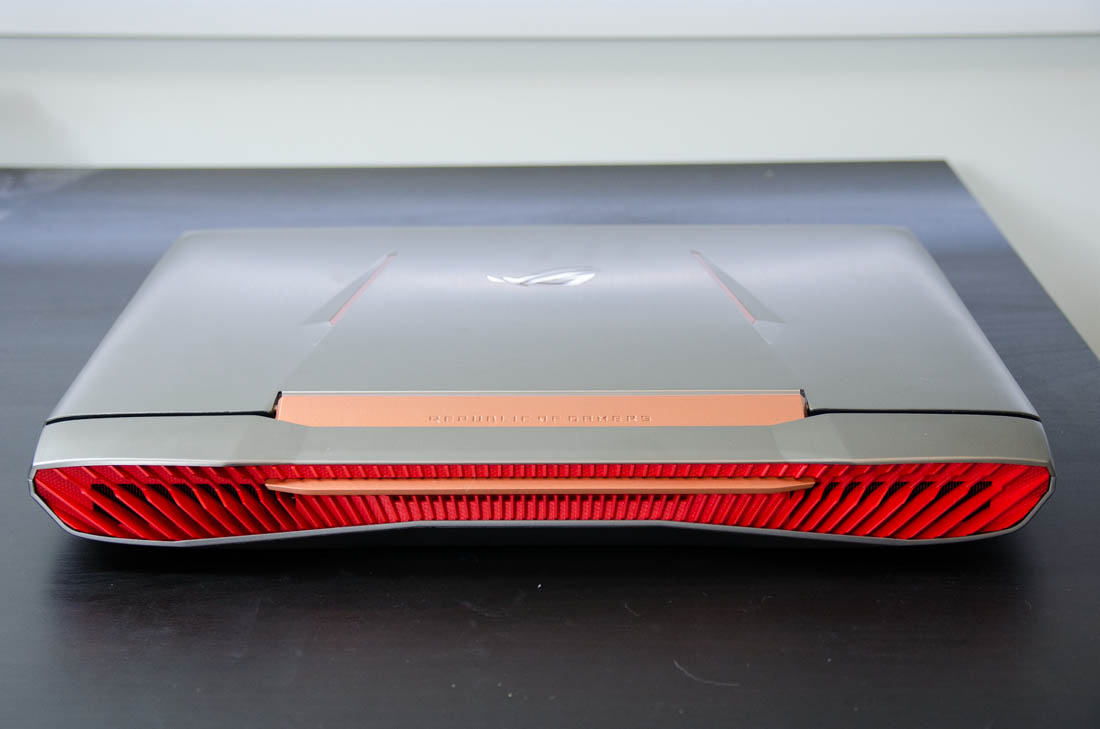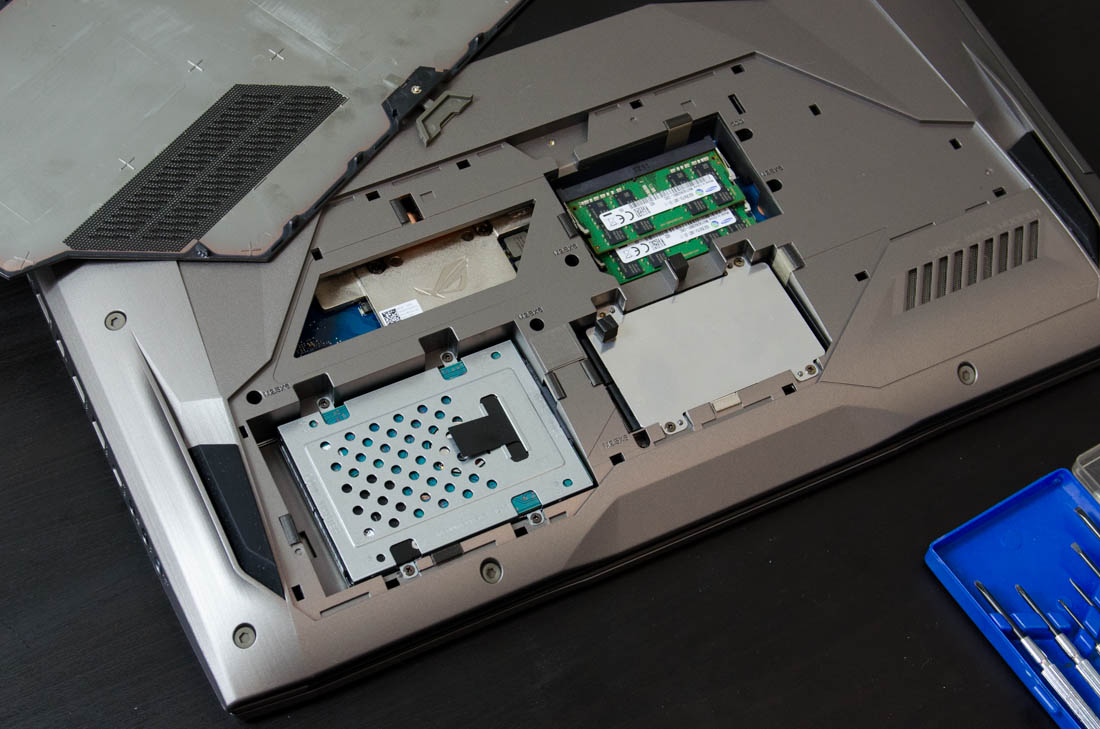The biggest thing to happen to gaming laptops this year is the launch of Nvidia's GeForce 10 series. Bringing performance parity with their desktop counterparts, Nvidia's new graphics chips are a revolutionary step for mobile PC gaming that will allow laptops to be treated as first-class citizens for the first time.
The absence of M-series chips in the GeForce 10 family also simplifies Nvidia's graphics offerings for consumers. Buyers can look at laptops that pack GTX 1060, GTX 1070 and GTX 1080 GPUs knowing these are near equivalents to what desktop gamers can enjoy.
Case in point, the new Asus ROG G752VS is a massive 17-inch system that packs a GeForce GTX 1070 GPU. The GTX 1070 replaces the GTX 980 (the more powerful, non-M variant) in Nvidia's mobile line-up, with both chips featuring similar TDPs near the 150-watt mark. This is a lot of power to dissipate, hence the G752VS' use of a sizable cooling solution.
The GeForce 10 series also includes the 180W GTX 1080, which occupies a performance bracket we haven't seen in laptops before.
A few weeks ago we previewed the Asus ROG GX800, a monstrous gaming station equipped with two GTX 1080 mobile GPUs in SLI, which let us test drive the new mobile GeForce chips and attest how they compare against their desktop counterparts.
There's also the 80W GTX 1060 - a replacement for both the GTX 970M and 980M - which can be found in a more affordable variant of this laptop: the ROG G752VM.
There are several models of the G752VS available, which I'll detail later. The unit we received for testing packs some beefy hardware including an overclocked Core i7-6820HK processor, 64 GB of DDR4 2400 MHz memory, a 1 TB PCIe SSD, 1 TB hard drive, a 17.3-inch 1080p IPS LCD with G-Sync, and USB 3.1 Type-C.
To fit in such powerful hardware and the required cooling, the G752VS is absolutely enormous. 17-inch gaming laptops tend to be large, but the G752VS is particularly huge, at 53mm thick and 4.36 kg heavy.
I wouldn't describe this system as being portable, and its marketing definitely focuses on power over portability. That's not to say the G752VS couldn't be moved - it has a detachable power cord and an internal 90 Wh battery - but it's a laptop that will sit on a desk, plugged into the wall 95% of the time.
Asus has tried to hide most of the ROG G752VS' thickness through aggressive angles, particularly on the base, which works to a certain extent: the laptop doesn't look like a 53mm-thick brick from all sides. However when placed near an ultraportable laptop or even a smaller gaming notebook, the size of the G752VS is immediately apparent.
There is no shortage of 'gamer' style around the G752VS. Along the rear edge is a massive red section that includes exhaust ports for two large cooling fans, while the hinge assembly is a distinct copper orange. LEDs are included as well, which illuminate two slits on the laptop's lid along with the center of the aggressive red exhaust panel.
The keyboard area is a two-tone design, featuring softer black plastic around the keys, and harder grey plastic around the outer edges. Again, gamer design is in full force here, with weird angles and a small patterned section as the main culprits. There is nothing subtle or sleek about the G752VS' chassis, which is typical of the most powerful gaming laptops on the market.
To be honest, I think this gaming laptop is quite hideous, as I've never been a fan of 'gamer' design cues. However, the design of a product can be subjective, and let's be honest: the performance is what matters here.
The G752VS feels solidly built, although the choice of materials isn't entirely premium. The majority of this laptop's body has been constructed from plastic of various types, colors and finishes, with some metal thrown into the mix. The largest metal panel is the laptop's lid, which looks respectable and gives good protection to the display.
Most of the laptop's ports are found on the right-hand side: three 3.5mm audio jacks (which can be used for 5.1 analog output), a USB 3.1 Type-C port, two USB 3.0 type-A ports, mini-DisplayPort 1.2, HDMI 2.0, a gigabit Ethernet port, and the proprietary power connector.
The left side has a further two USB 3.0 ports, an SD card reader, and an optical drive. The inclusion of a DVD drive is surprising as we're quickly moving away from optical disc storage, and the large amount of space the drive occupies could have been better utilized.
 |
 |
On the bottom of the laptop is a window that exposes the beefy cooling solution, alongside a removable panel. Unscrewing a single screw gives access to two DIMM slots, which in my review unit were each configured with 16 GB DDR4 sticks; combined with 32 GB of non-removable memory, this equates to a total of 64 GB of RAM.
There's also access to two PCIe M.2 slots, configured here with 512 GB SSDs in RAID 0, and the 2.5-inch hard drive bay. Having easy access to swappable components is a great feature of this gaming laptop, although without that optical drive I reckon Asus could have crammed in more 2.5-inch drive bays.
